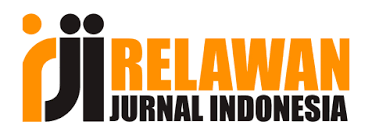Developing Higher Order Thinking Skills in Learners’ Through Active Learning
Abstract
Higher order thinking skills (HOTS) is exercised when there is an expression of concept different from the original information. It is a display of creativity based on critical thinking and sound judgement. This paper looked into how higher order thinking skill can be learnt through active learning which include think-pair-share, brainstorming, scaffolding to mention but a few. The paper posited that HOTS on its own entail holistic involvement of the students in the learning process in the classroom while they think on what they do. Higher-order thinking skills were elucidated with active learning processes mentioning on how HOTS can be learnt through active learning. Some challenges to teaching higher order thinking skills were discussed. It was suggested that it is very pertinent to plan the lessons in such a way that it will enable the use of all the taxonomic levels of remembering, understanding, applying, analyzing, evaluating and creating especially the last three that enable higher order thinking. Notable recommendations were made that measures to impact HOTS should be started from the basic levels of education and that teachers should be adequately trained on how to inculcate knowledge values in such a way that HOTS can be imparted as it is a basic requirement for the youths in the 21st Century.
References
2. Achuonye, K.A. (2011) Problem- Based Learning and Higher Cognitive Skills Performance. Lamber academic publishing Germany http://www.lap-publishing.com//extern/listproject.
3. Anderson, L., Krathwohl, D. & Airasian, P. (2001), A Taxonomy for learning, teaching, and assessing: A revision of Bloom's taxonomy of educational objectives, New York: Pearson, Allyn & Bacon.
4. Anthony, Glenda (1996). Active learning in a constructivist framework. Educational studies in Mathematics. 31 (4): 349-369. doi:10.1007/BF00369153. JSTOR 3482969. S2CID 143954768.
5. Barahal, S. (2008). Thinking about thinking: Pre- service teachers strengthen their thinking Artfully, Phi Delta Kappan 90 (4).
6. Barnes, Douglas (1989). Active learning. Leeds University TVEI support project, 1989. 19.
7. Bloom B. S. (1956). Taxonomy of educational objectives, handbook I: The cognitive domain, New York: David McKay Co Inc.
8. Brookhart, S. (2010). How to assess higher order thinking skills in your classroom, ASCD, http://www.ascd.org/Publications/Books/Overview/How-to-Assess-Higher-Order Thinking-Skills-in-Your-Classroom.aspx.
9. Butler, H.A (2012). Halpern critical thinking assessment predicts real-world outcomes of critical thinking Applied Cognitive. Psychology. 26(5) 721–729.
10. Chai, C.S and Kong, S.C (2017). Professional learning for 21st century education. Journal of Computer education. 4(1) 1–4.
11. Facione, P.A. (2011). Critical Thinking: What It Is and Why It Counts. Think Critically. Pearson Education. Canada.
12. Jennifer, L. S; Ramos,B. B; Dolipas, B. B. Villamor, B. (2013). Higher Order Thinking Skills and academic performance in Physics of College students: a regression analysis. International journal of innovative interdisciplinary research, 4.
13. Kauchak, D., & Eggen, P. (1998). Learning and teaching: research-based methods (3rd ed.), Boston: Allyn and Bacon.
14. McBride, R. E. (2016). Critical Thinking—An overview with Implications for physical education. Journal of teaching in Physical education. 11(2) 112–125.
15. Nitko, A. & Brookhart, S. (2007). Educational assessment of students, Pearson Merrill Prentice Hall.
16. Norris, S. & Ennis, R. (1989). Evaluating critical thinking, pacific groove, CA: Midwest Publications.
17. Rusbult, Craig (1999)."Constructivism as a theory of active learning". www.wikipedia. Retrieved 25 September 2015.
18. Saavedra, A. R. & Opfer, V. D. (2012). Teaching and Learning 21st century skills: Lessons from the learning sciences, Asia Society. 35.
19. Slavin, R. (1995). A model of effective instruction, The Educational Forum, 59.
20. Snyder, L. G. and Snyder, M. J. (2008). Teaching critical thinking and problem-solving skills how critical thinking relates to instructional design. Delta Pi Epsilon Journal 1(2) 90–100.
21. Sulaiman, T., & Wulandari, Y. (2017). The effectiveness of teachers’ higher order thinking skills questions on science test achievement of form four students. International conference on education in Muslim society (ICEMS 2017) 215. Atlantis Press.

















